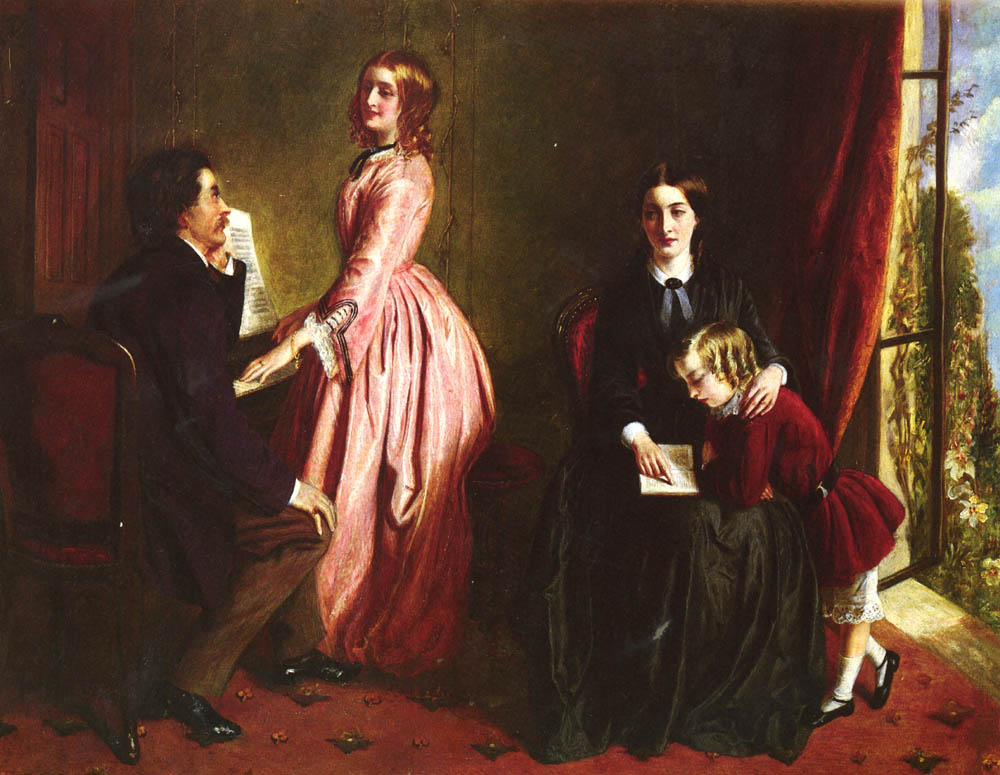A woman in Regency England (approximately 1810-1820) who found herself in the position of governess was typically not to be envied.
 |
| "The Governess" by Jean-Baptiste Simeon Chardin, 1739. Public Domain PD-1923 |
In the early nineteenth century in Great Britain, bank failures, famines and economic struggles caused many a middle-class, or gently bred, family to lose their fortunes. Young men could take any number of respectable jobs considered suitable to their class, but their sisters faced a quandary. Jobs were fewer for females in general, and many of them, like working in a shop, were considered beneath a gently bred, "groomed" female.
Teaching was the only realistic possibility these young women faced. Some took jobs in girls' schools, while others became governesses, living in the homes of their students.
Her position was unique in a wealthy household. In Georgian-era society, a governess' standing was considered "good enough" to educate a nobleman's children, but she was not of high-enough standing to be treated as a friend or member of the family.
 |
| "The Governess" by Rebecca Solomon, 1851. Public Domain PD-1923. The governess, seated on the right, is present but almost invisible to the parents. |
Neither did she fit in with the servants of the house, who likely came from humbler origins than she did. Therefore, governesses often dined alone, used the schoolroom as her sitting room, and had little in the way of adult company in the household.
Jane Austen described Jane Fairfax's decision to become a governess in Emma this way:
“With the fortitude of a devoted novitiate, she had resolved at one-and-twenty to complete the sacrifice and retire from all the pleasures of life, of rational intercourse, equal society, peace, and hope, to penance and mortification forever.”
Clearly, the lot of a governess was not viewed as a pleasant one. It could be a lonely life--but it kept her stomach full and a roof over her head.
 |
| "The Governess" by Richard Redgrave, 1844. Public Domain PD-1923 |
Some families grew attached to their governesses and maintained caring relationships (like Emma did with her governess, Miss Taylor, in Austen's Emma). Some mothers, however, resented the closeness their children developed with their governess, and a resentful or jealous parent could dismiss a governess on the spot. Others, like one of the families Charlotte Bronte served, treated governesses as slaves, forcing them to do sundry tasks in addition to teaching.
 |
| Charlotte Bronte by George Richmond, chalk on paper, 1850. Public Domain. Bronte was a governess for a time, as was her fictional creation, Jane Eyre, perhaps one of the most famous literary governesses in history. |
Suitors were not easy for the governess to come by, however, but most governess positions were short-lived, allowing them to return home and re-establish themselves with their families or marry.
Those who never married or received enough pay to save for retirement found themselves destitute when they reached middle age. In 1841, The Governesses' Benevolent Institution was set up to help such ladies receive pensions.
Despite the bleak life many a governess endured, others were well-loved by the families who employed them, allowing them to live comfortably in their later years.
***
BIO:


Susanne Dietze began writing love stories in high school, casting her friends in the starring roles. Today, she's the award-winning author of over a dozen historical romances who's seen her work on the ECPA and Publisher's Weekly Bestseller Lists for Inspirational Fiction. Her newest novella, Three Little Matchmakers in the Regency Brides Collection, tells the story of a governess and her three mischievous charges.
To learn more, visit Susanne's website, www.susannedietze.com





